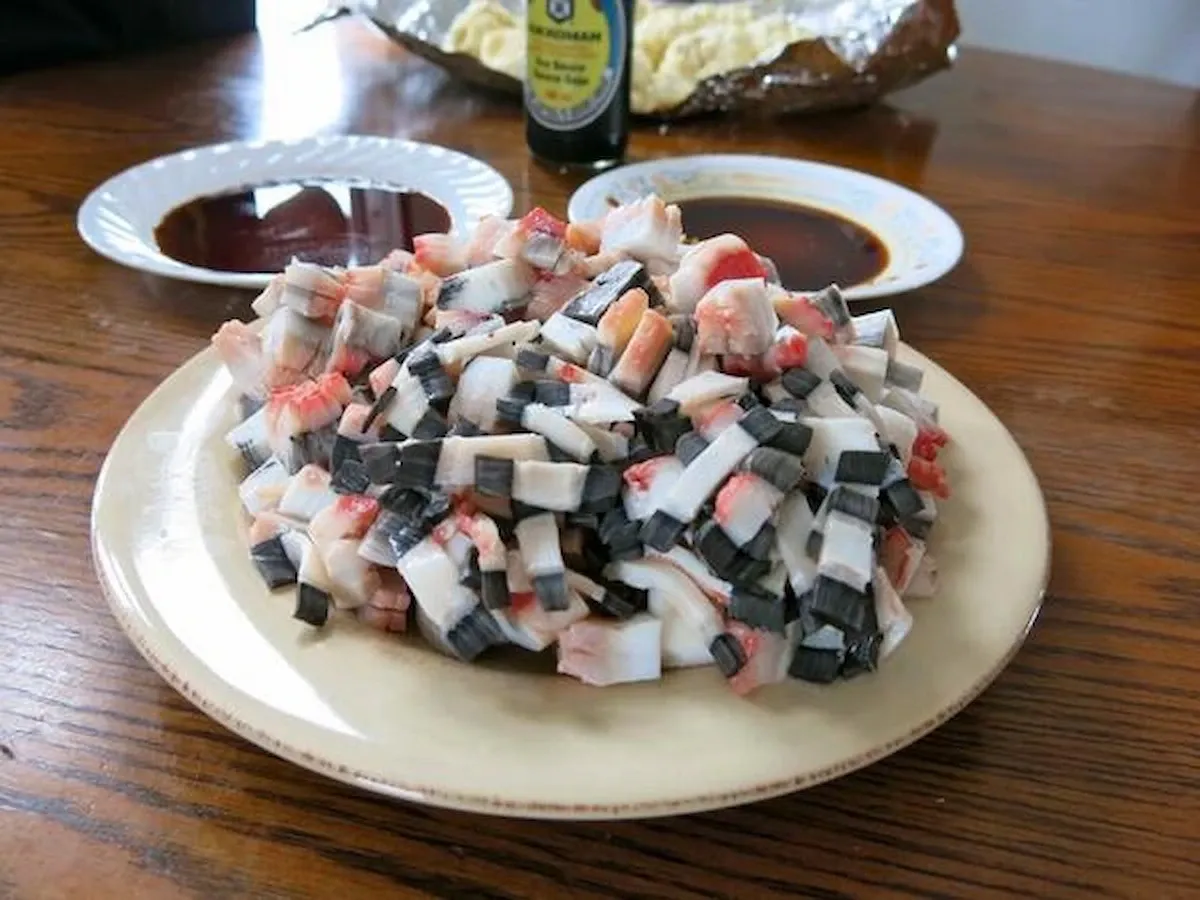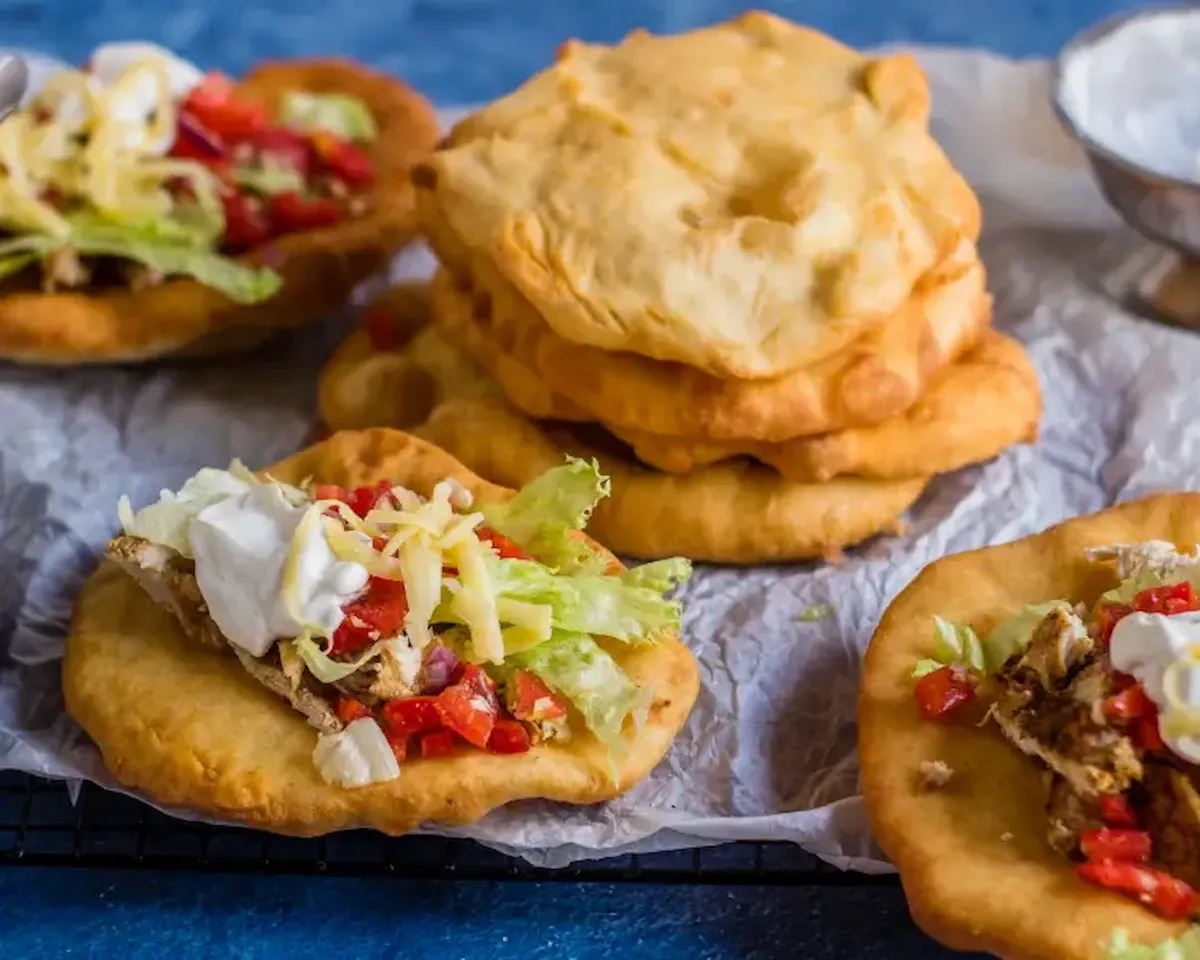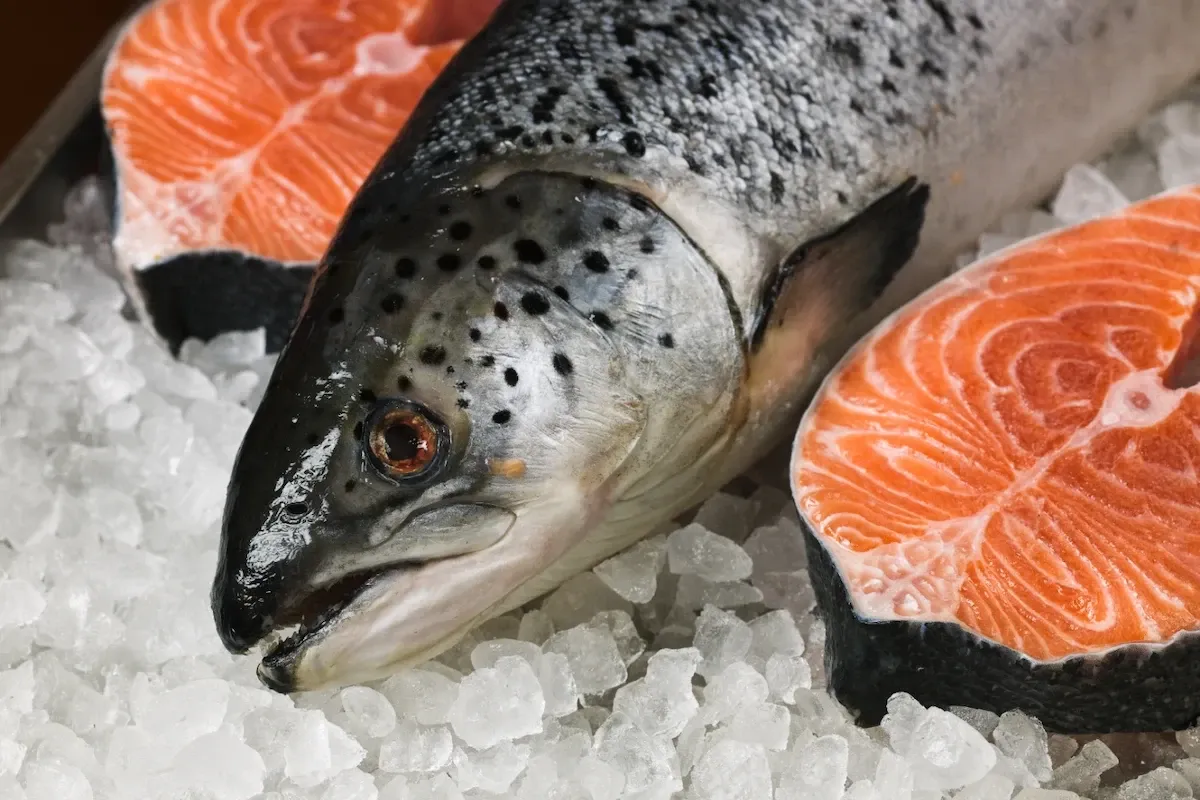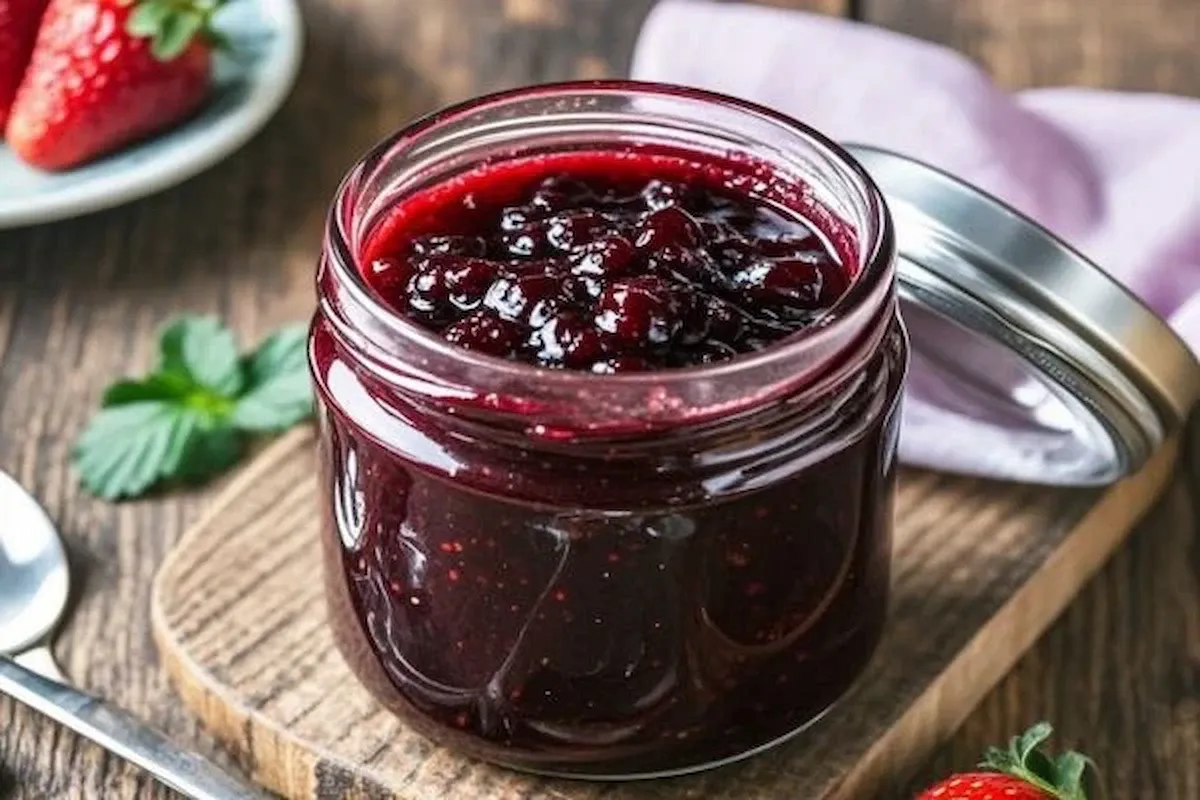Alaskan Native cuisine is more than just sustenance; it’s an integral part of the culture, history, and identity of the people. Located in a harsh land with a frigid climate, Alaska Natives have developed a unique culinary tradition, making the most of the abundant natural resources around them. From fresh seafood from the ocean to wild game from the vast wilderness, each dish tells a story of adaptation, innovation, and a deep connection to the land. Join “Du lịch khắp thế gian” (Travel the World) to explore this extraordinary culinary world, where traditional flavors blend with the resilient spirit of Alaska Natives.
Origins and Characteristics of Alaska Native Cuisine
Alaska Native cuisine has been shaped and evolved over thousands of years, reflecting a close relationship with the natural environment and available resources. Native communities, including diverse groups such as Inuit, Yup’ik, Aleut, Athabascan, Tlingit, Haida, and Eyak, each have their own unique customs and traditional dishes, yet share common characteristics in ingredients and preparation methods.
Alaska, with its diverse terrain ranging from long coastlines to majestic mountains and icy tundra, offers a rich but challenging food source. The harsh climate required Natives to learn how to preserve and prepare food to survive the long, cold winters.
Main Ingredients:
- Seafood: Salmon, cod, halibut, herring, whale, seal, walrus, shrimp, crab, and other seafood are central to the diet of many coastal communities. Salmon is particularly important, not only as a food source but also carrying deep cultural and spiritual significance.
- Wild Game: Caribou, moose, bear, rabbit, squirrel, and birds are important sources of meat for inland communities. Wild game provides essential protein and fat to combat the cold and maintain energy.
- Berries and Wild Plants: During the short summer, berries such as blueberries, raspberries, strawberries, and wild plants like roots and leaves are harvested to supplement the diet with vitamins and fiber.
Traditional Preparation Methods:
- Smoking: Smoking is widely used to preserve fish and meat. Smoke not only helps food last longer but also creates a distinctive flavor.
- Drying: Fish, meat, and even berries are dried under the sun or wind to remove moisture, preventing the growth of bacteria and mold.
- Fermenting: Some foods, especially fish, are fermented to create unique flavors and extend shelf life.
- Boiling and Grilling: Simple cooking methods like boiling and grilling over a campfire are also common, especially when preparing fresh meat and seafood.
Cultural and Spiritual Significance:
Cuisine is not merely about survival but also a vital part of Alaska Native culture and spirituality. Rituals and customs related to hunting, fishing, and food preparation are passed down through generations, expressing respect for nature and animals. Food is often shared within the community, strengthening social bonds and solidarity.
Typical Traditional Dishes
Akutaq (Eskimo Ice Cream)
Akutaq, also known as Eskimo ice cream, is a unique and energy-rich dessert of the Inuit and Yup’ik people. This dish is unlike conventional ice cream; the main ingredient of Akutaq is animal fat, typically whale blubber, seal blubber, or caribou fat, mixed with berries, sugar (if available), and sometimes white fish or other ingredients depending on family and regional recipes.
To make traditional Akutaq, animal fat is whipped until light and fluffy like whipped cream. Then, fresh or frozen berries such as blueberries, raspberries, wild strawberries, or crowberries are mixed in. The natural sweetness of the berries combined with the richness of the fat creates a distinctive flavor that is both unusual and appealing.
Akutaq is not only a delicious dish but also a rich source of energy, essential in Alaska’s cold environment. It is often prepared for festivals, family gatherings, or simply enjoyed on warm summer days. Today, Akutaq remains a beloved and cherished dish in Alaska Native communities, a symbol of ingenuity and adaptability to a harsh living environment.

Muktuk (Whale Skin and Blubber)
Muktuk is an important traditional food of the Inuit, made from the skin and blubber of Bowhead, Beluga, or Narwhal whales. This dish is a valuable source of vitamin C, a nutrient scarce in traditional Arctic diets.
To prepare Muktuk, the skin and underlying blubber layer of the whale are cut into square pieces or long strips. Muktuk can be eaten raw, boiled, pickled, or fermented. When eaten raw, Muktuk has a slightly chewy, fatty texture and a distinctive marine flavor. Some people prefer to dip Muktuk in salt, soy sauce, or other seasonings. Boiled Muktuk has a softer texture and milder flavor. Pickled or fermented Muktuk has a stronger flavor and longer shelf life.
Muktuk is not just food but also a part of Inuit culture and history. Whale hunting and Muktuk preparation are important community activities, strengthening social relationships and cultural traditions. Although many other food options are available today, Muktuk still holds a special place in Inuit cuisine and life, symbolizing the connection to the ocean and marine animals.

Fry Bread
Fry Bread is a flatbread that is deep-fried, popular in many Native American communities across North America, including Alaska. Although not originally from Alaska, fry bread has become a familiar and beloved part of Alaska Native cuisine.
Fry bread is made from flour, baking powder, salt, and water. The ingredients are mixed into a soft dough, then divided into small pieces, flattened, and fried in hot oil until golden brown and puffed up. Fry bread has a crispy exterior and a soft, airy interior, and is usually eaten hot.
Fry bread can be enjoyed in many ways. It can be eaten with honey, berry jam, powdered sugar, or served with savory dishes like stew, soup, or beans. At festivals and community events, fry bread is often sold and served as a popular street food.
Despite its non-Alaskan origins, fry bread has been adopted and adapted by Alaska Natives to local tastes, becoming part of contemporary cuisine and a dish reminiscent of historical cultural exchange.

Smoked Salmon
Smoked salmon is an indispensable dish in Alaska Native cuisine. Salmon, especially Chinook (king), Sockeye (red), and Coho (silver) salmon, is of immense nutritional and economic value to the people here. Smoking not only preserves salmon but also enhances its distinctive and delicious flavor.
The traditional Alaska Native salmon smoking process is elaborate and meticulous. Fresh salmon, after being cleaned and filleted, is soaked in brine or seawater to enhance flavor and moisture. Then, the salmon is hung on smoking racks, often using alder or applewood to create fragrant smoke. Smoking time can range from a few days to several weeks, depending on the size of the fish and desired moisture level.
Smoked salmon can be enjoyed directly as a snack or prepared into many different dishes. It can be served with bread, salad, eggs, or used in soups, pasta, and pizza. The rich, savory flavor of smoked salmon is an unforgettable culinary experience when visiting Alaska.

Caribou/Moose Meat
Caribou and moose meat are important sources of protein and fat in the Alaska Native diet, especially for inland communities. These meats have a rich, slightly gamey flavor and are highly nutritious.
Caribou and moose meat can be prepared in many ways. Traditional methods include grilling over a campfire, stewing, drying, or making sausage. Grilled meat is often simply seasoned with salt and pepper to preserve its natural flavor. Stewed meat is often cooked with vegetables and spices to create a warm and nutritious dish for the cold winter. Dried meat is an effective preservation method, serving as a food reserve or a snack for hunting trips.
Today, caribou and moose meat remain popular dishes in Alaska. Visitors can enjoy dishes made from caribou and moose meat in local restaurants or purchase ready-made products such as caribou sausage or smoked moose meat as souvenirs.

Soups and Stews
Soups and stews are indispensable dishes in the daily meals of Alaska Natives, especially during the cold winter. These dishes are often made from various ingredients, depending on available food sources and family preferences.
Some popular soups and stews include:
- Salmon Soup: Made from fresh or smoked salmon, combined with potatoes, onions, carrots, and herbs.
- Caribou/Moose Soup: Made from caribou or moose meat, with added potatoes, carrots, cabbage, and spices.
- Seafood Soup: Made from seafood such as shrimp, crab, clams, mussels, combined with vegetables and flavorful broth.
- Akutaq Stew: A variation of Akutaq, where animal fat is cooked into a thick stew, served with meat, fish, or vegetables.
Soups and stews not only provide nutrition but also help keep the body warm in cold weather. These dishes showcase the ingenuity and creativity of Alaska Natives in maximizing available food sources to create delicious and nutritious meals.
Berries and Wild Plants
Despite the harsh climate, Alaska is still home to many nutrient-rich berries and wild plants. During the short summer, Alaska Natives often harvest berries such as blueberries, raspberries, wild strawberries, crowberries, lingonberries, and many others.
Berries can be eaten fresh, made into jams, juices, or used in desserts like Akutaq. Berries are not only delicious but also rich in vitamins, antioxidants, and fiber, very beneficial for health.
In addition to berries, Alaska Natives also harvest and use many other wild plants such as roots, leaves, wild asparagus, mushrooms, and seaweed. These plants are used for cooking, medicine, or tea. For example, cloudberry roots are used to make cakes, Labrador tea leaves are used for tea, and seaweed is used to make soup or eaten raw.
Harvesting and using berries and wild plants are an important part of Alaska Native culinary and cultural traditions, reflecting a deep understanding of nature and the ability to live in harmony with the environment.

Alaska Native Cuisine Today
Today, Alaska Native cuisine is undergoing changes and cultural exchanges. Exposure to the outside world brings new ingredients and preparation methods, enriching traditional cuisine. However, Alaska Natives are still striving to preserve and develop their traditional culinary values.
Many restaurants and eateries in Alaska now feature native dishes on their menus, introducing visitors and locals to the unique flavors of this land. Native chefs are also creating new dishes, combining traditional ingredients with modern cooking techniques, creating a unique contemporary Alaska culinary style.
Visitors to Alaska today have many opportunities to experience native cuisine. Cultural tours often include traditional cooking classes, visits to local food markets, and meals at native homes. Exploring Alaska Native cuisine is not only a delightful culinary experience but also an opportunity to gain a deeper understanding of the culture, history, and people of this land.
Conclusion
Traditional Alaska Native cuisine is a priceless cultural treasure, reflecting creativity, resilience, and a deep connection to nature. From rich Akutaq to nutritious Muktuk, from fragrant smoked salmon to crispy fry bread, each dish carries a story and a unique cultural significance.
Exploring Alaska Native cuisine is not just about enjoying delicious food but also a journey to learn about the history, culture, and people of this land. Come to Alaska and experience the uniqueness and richness of native cuisine, to deeply feel the beauty and spirit of the land and its people. At the same time, let us join hands to preserve and promote these precious traditional culinary values for future generations.